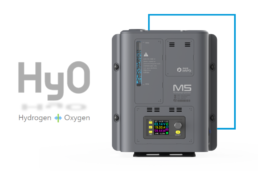South Korea’s technology industry has been growing for decades now. Thanks to Samsung and LG, they are already the leaders in smartphone technology. A significant reason for this is that South Korea is one of the top manufacturers of semiconductors, thanks to Samsung Electronics and SK Hynix. The two companies are among the leading manufacturers of semiconductors in the world. Moreover, the South Korean government has stated that it will invest over $450 billion in chips by 2030, with the majority coming from private companies in Korea. President-elect Yoon Suk-yeol has stated he will form a public-private committee to promote the semiconductor industry’s R&D.
The United States, South Korea, Taiwan, and China are the top 4 countries dominating the semiconductor industry as of 2022. However, the top customer by far is China which accounts for over 50% of total consumption. Semiconductor companies are crucial for developing chips used to create electronic devices like smartphones and PCs.
So what exactly are Semiconductors?
![]()
Semiconductors are like the “seed” of electronic devices. Conductors conduct electricity. Insulators, on the other hand, don’t conduct electricity. Therefore semiconductors fall in between the two. Integrated circuits made using such electronic properties are called semiconductor chips.
Furthermore, billions of transistors lie inside a single chip which can be as small as a dime. These transistors are the building blocks of digital codes. If electricity is being passed through the gate of a transistor, it is recognized as a 1. If not, it is recognized as 0. Semiconductors process all kinds of information using binary numbers (1s and 0s).
Semiconductors – How its made
Manufacturers use silicon (found in sand) to create semiconductors. On these wafers, they build tiny intricate circuits throughout hundreds of processes. Since billions of transistors must be placed inside this small area, it is essential to be small yet precise. The semiconductor-making process has evolved dramatically over the years. However, there are physical limitations on how small the circuit can get. Therefore, many companies started using 3D transistors, which allowed them to create 10-nanometer chips which were the smallest in 2017. How small are 10 nanometers? It is 10 thousand times thinner than the diameter of a single human hair.
Why do these circuits have to be so small?
The smaller the circuit’s width, the shorter the electron’s traveling distance. This improves the efficiency as well as the performance of the chip. In addition, more chips per wafer mean less production cost and a lower price. Today some semiconductor companies are working on chips that are 2-nanometers!
China is the #1 Buyer in the Semiconductor Industry

Today, China’s semiconductor market is the biggest in the world. Over half of the world’s semiconductors go to China. This trend continues to grow as China’s demand for tech products like computers, laptops, smartphones, tablets, and digital TVs keeps increasing.
China creates…
- 90% of the world’s smartphones
- 60% of the world’s PCs
- 65% of the world’s smart TVs
Many of these factories are located in mainland China (some are non-Chinese firms). The Chinese government has been aggressive in importing semiconductors due to their interest in a national optic fiber tracking system and the roll-out of 5G infrastructure. In addition, China will also start focusing on new energy, autonomous driving, and creating smart factories, which will further drive the demand for semiconductors.
Becoming the leader in the Semiconductor Industry
China’s goal is to become the leader in semiconductor production by 2030. Their focus till then will be on advancing semiconductor manufacturing in China through investment, acquisition, and talent recruitment to China. South Korea still has a 15% market share in the semiconductor production market compared to China’s 6%. However, China was only at 4% in 2020.
Since 2016, China has bought expertise from abroad to get as much talent in this high-tech industry as possible. China created the National Integrated Circuit Industry Equity Investment Fund, which has raised over $18 billion. In addition, the Ministry of Industry and Information Technology in China will spend $150 billion over the next decade to support the semiconductor sector. For example, China offers double the salary for experienced engineers and managers in semiconductor manufacturing compared to Taiwan. Recently, China created a $29 billion fund to invest in the semiconductor industry.
Finally, the Chinese government incentivized companies to enter China while lowering barriers to entry for foreign participants in China’s semiconductor production. China’s ultimate goal is to depend on itself to meet its semiconductor demands. Currently, China relies on 84% of its semiconductor requirements from imports.
The Top Manufacturers in the Semiconductor Industry
In sheer manufacturing capacity, Taiwan is #1 (56% market share), with South Korea coming in at #2 (15%). The United States comes in 3rd (7%); however, China is gaining ground fast. Thanks to Samsung, South Korea is powerful regarding memory chips.
China is not at the top because they do not have an advanced semiconductor manufacturing facility. Their facilities can’t compare to the ones in Taiwan, the United States, and South Korea.
TSMC (Taiwan)

Taiwan produces the most number of chips in the world. Thanks to TSMC (Taiwan Semiconductor Manufacturing Company), Taiwan is considered the gold standard in semiconductor manufacturing. TSMC is the largest and most advanced semiconductor manufacturer and supplies chips to both Huawei and Apple. If you compare a Chinese semiconductor manufacturing facility to TSMC, one creates 14nm nodes while the other is working to develop 2nm nodes. TSMC pledged to spend $100 billion over the next three years to grow its production capacity.
Intel (United States)

When it comes to design, the United States dominates. Intel is the biggest semiconductor manufacturer in the United States. Their market cap stands at over $250 billion. They design and manufacture motherboard chipsets, network interface controllers, and integrated circuits. They were the first to make a metal oxide semiconductor. Their main competitor could be Apple moving forward. Apple could discontinue its long-term partnership with Intel and start its chip manufacturing sector in-house.
Samsung Foundry (South Korea)

Samsung Foundry is at the cutting edge of manufacturing. Right there with Taiwan. The South Korean government released an AI semiconductor development strategy to achieve a global market share of 20% with 20 innovative companies and 3,000 top-level engineers in the semiconductor industry by 2030. Samsung is already researching AI semiconductors that have the potential for high performance and lower power intake. These new semiconductors will create new markets in IoT, mobility, and many more industries. The aim is to release 50 demand-specific AI chips by 2030. Therefore, the South Korean government will provide over $60 million in funds for innovative companies to assist in their R&D.
SMIC (China)

SMIC is China’s largest semiconductor manufacturer however they are several generations behind the others mentioned above. However, SMIC aims to boost self-sufficiency in the sector, so China no longer has to rely on foreign countries. SMIC is currently manufacturing less-advanced chips that go into cars but is actively building new production plants in Beijing, Shanghai, and Shenzhen.
China vs. the United States
China has been the biggest market for South Korea to export semiconductors (Over 40%). The trade war between China and the United States has prevented South Korea from selling semiconductors that have US technologies.
The trade war between the United States and China has shown just how reliant China is on foreign chips. Huawei was placed on the U.S. Entity list in May of 2019. Therefore Huawei needed to find a new supplier of chips to build their smartphones. They discovered their suppliers in Japan, Taiwan, and the Netherlands. However, back in August 2020, the United States further limited Huawei from getting foreign-made chips developed or produced with U.S. software or technology. They did this by adding 38 additional Huawei affiliates to the Entity List. Since Taiwan gets 60% of its revenue from the United States, they have already stopped manufacturing for Huawei.
U.S. President Joe Biden proposed a $50 billion plan in 2021 for chipmaking and research. China’s Xi Jinping also pledged to invest in high-tech industries, with semiconductors playing a major role.
John
John is the Co-Founder of Seoulz. He has covered the Korean startup & tech scene for over eight years and has written over 700 articles regarding the Korean startup ecosystem. He has brought global attention to Korea's tech scene using Google SEO. Email him at john@seoulz.com
Related Posts
Top Fabless Semiconductor Startups in Korea
November 8, 2022
The Space Program in South Korea Continues to Grow
October 15, 2023






